Tillandsia Midhurst
Click thumbnails for full size, scaled to a new window.
Tillandsia Midhurst
Registered by M.Kellett.
Derek Butcher ... "Seed obtained from Lau in Mexico in the 1980's as T. insignis. This name became T. beutelspacheri but the seedlings only have a tenuous link to the species suggesting foreign pollen."
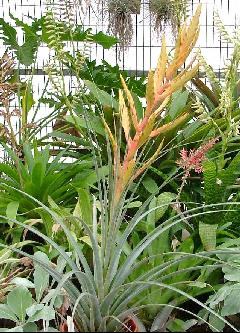
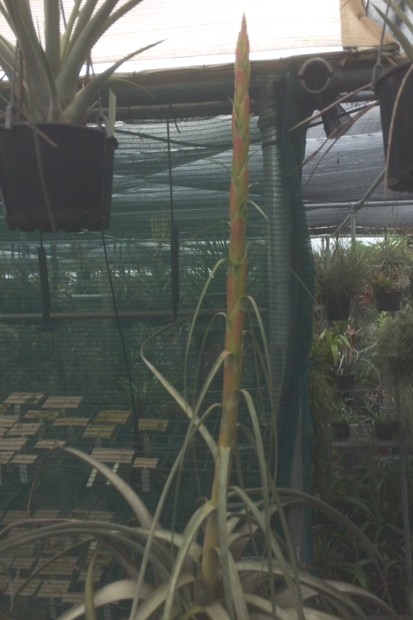
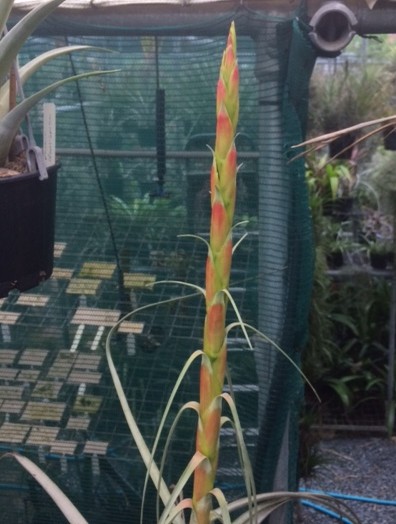
| Maurice Kellett 05/07 |
John Olsen 02/18 |
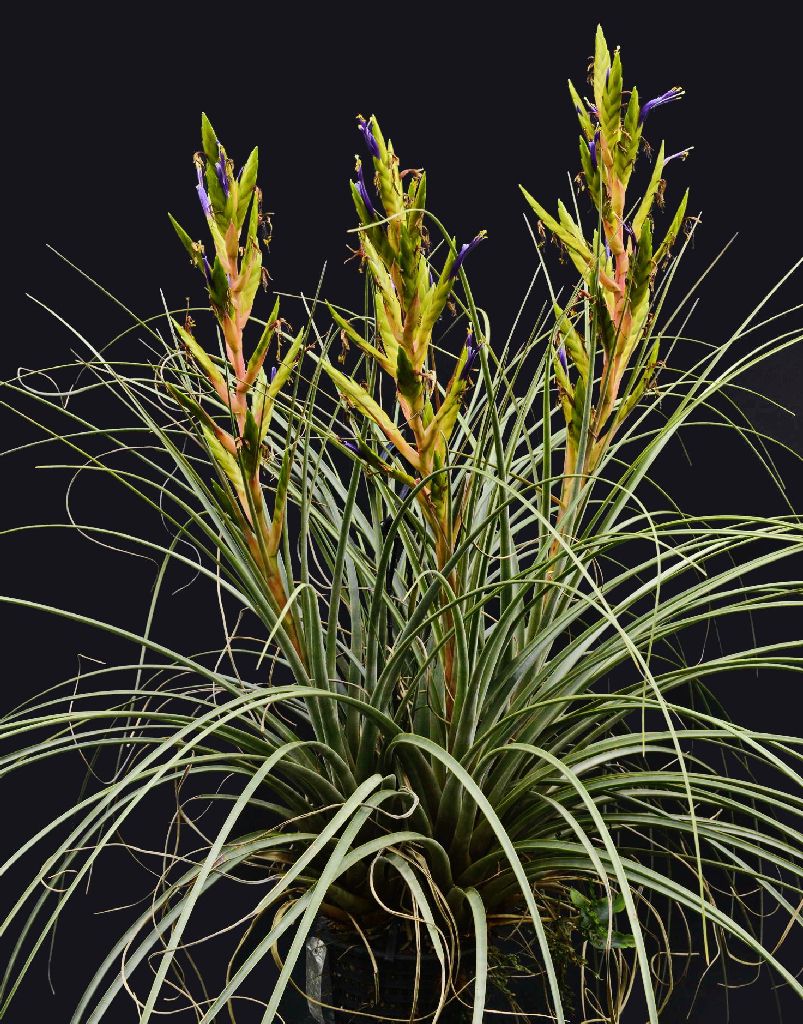
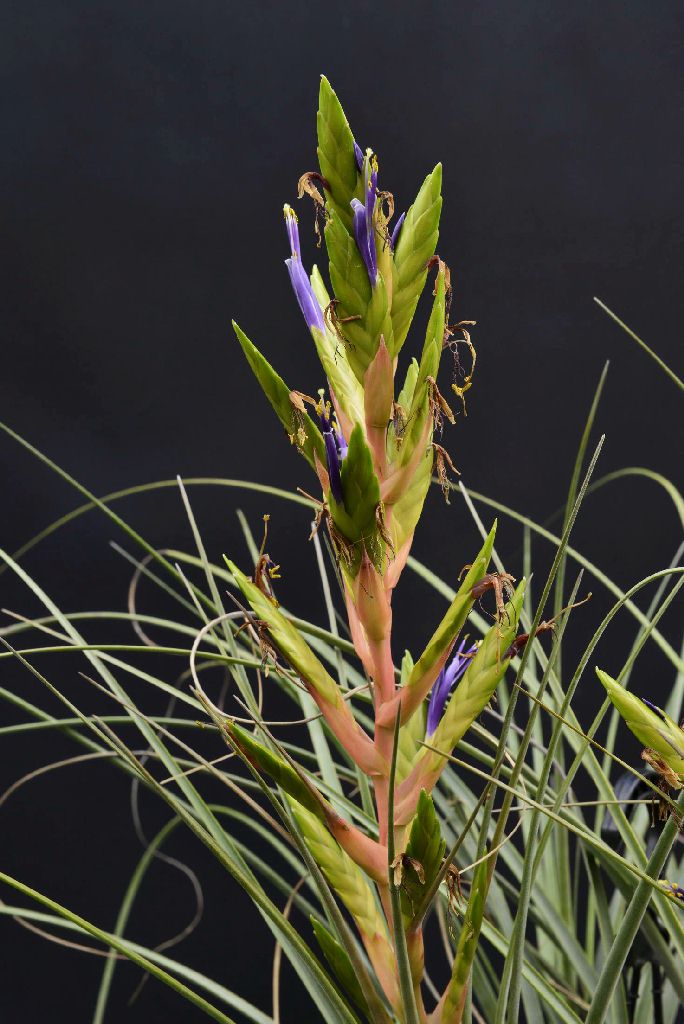
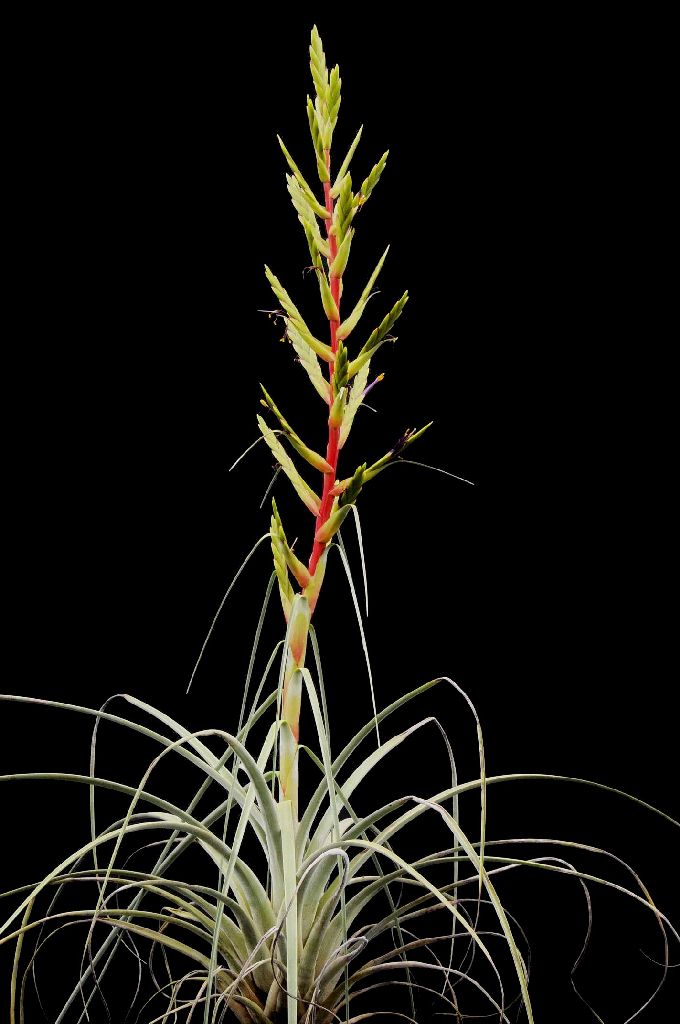
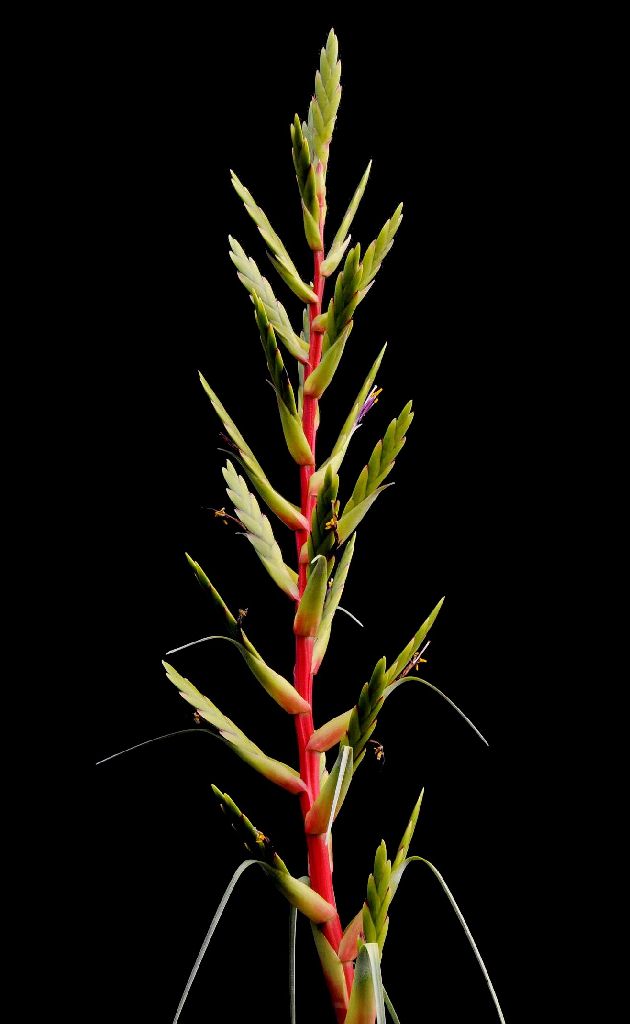
| Peter Tristram 09/18. ex. Maurice Kellet as "T. insignis NOT, Lau seed" |
T. dugesii. Peter Tristram 05/17 |
Peter Tristram 20/09/18 ... "About 11 years ago Maurice sold me a plant labelled "T insignis Not, Lau seed". A few years earlier there had been some discussion about a plant with that basic label that Maurice had in bloom but without flowers at the time. The email string is below, if you’re interested in the history. The BCR registers Maurice’s plant as T. Midhurst with links to beutelspacheri, that I’m not so sure.
My plant keys fairly close to T. dugesii, including the foliage and inflorescence peduncle (I have bloomed many of the variable dugesii over the years). This plant, unlike the others, pups. Maybe it is a hybrid but I think with dugesii not beutelspacheri, despite the reference to T. insignis. Is it close enough to 'Midhurst'? Is my plant closer to the one we discussed at the TPE, ex Maurice, brought to Albury by Terry. Who has it now? Chris? A comparative photo or 2 would be great. I think we ended up with a dugesii id for it too.
I wonder how many plants are out there from this seed and if/how any others have bloomed.
I added a couple of pics of a T. dugesii, collected by Lydia, that bloomed and died a few years ago.
The email string ...
- from Derek Butcher 28/03/07 ... "Maurice. We are now cooking on gas. I can now see that your plant has floral bracts with trichomes at the tip and this trait is only reported for T. beutelspacheri as far as I am aware. This trait also crops up in the natural hybrid xbergiana. I would still like someone to take a flower apart to see what is there because I feel 'Not Insignis' should be checked against the description of T. xbergiana to see what the differences are.
Let us now refresh our minds about natural hybrids. When two species are close to each other in the wild and there are no barriers to cross-pollination, natural hybrids can occur. However, these have less viable pollen than a species so there is a greater chance of back crossing to the species than the hybrid self fertilising. This means that there is a range of plants between the two parents, all at various stages of development. I believe we are in the middle of such evolution in Sumidero Canyon.
Despite what Len says, I believe Renate should publish her T. beutelspacheri var. unispica if only because I believe it has links with the erect flowered T. beutelspacheri ex Cork. The same applies to T. sumideroensis because it seems distinct. To be forever in my 'not yet published' file is not a place to be.
Now to 'Not Insignis' where seed was sent to Maurice by Lau. We do not know if the seed was collected in the wild, or a flowered plant was taken home by Lau and seed collected at his home, or a plant was taken home, flowered in Lau's collection, and set seed there with the problems of foreign pollen. In other words we will have difficulty in linking it with a species other than say xbergiana. If it cannot be linked to this then it needs a Cultivar name so its existence can be recorded. 'Not Insignis' could be used but to my mind is misleading. Something like 'Hurstbridge' would be better.
The natural hybrid that Renate associates with T. flabellata (as far as I am aware is not being described by Renate) would go into the natural hybrid database."
- from Peter Tristram 28/03/07 ... "Maurice: Here are the pics. The subject on your email was interesting."
- from Maurice Kellett 28/03/07 ... "Hello Peter, Yes that would be great. Anything to help Derek."
- from Peter Tristram 27/03/07 ... "Hi Maurice. No flowers were open. I can send some digitals to them if they don't have any. I'm sure I sent you a couple??"
- from Maurice Kellett 27/03/07 ... "Hello Peter. Quick query. When you were here and took some photos, did you manage to get one of "T. not insignis" showing the flower ??
Derek has a running series of emails with Renate and they centre about what is beutelspacheri and whether or not insignis forms part of this complex. Renate says she has seen nothing like it in her travels."
Derek Butcher 21/09/18 ... "Interesting observation. For inquisitive readers I enclose(see below) what we recorded about 'Midhurst' in 2007"
George Nieuwenhoven 21/09/18 ... "Derek et all, Interesting what you describe, I have had a fasciculata Midhurst in my collection since 2010 obtained directly from Maurice Kellett, it has flowered a few times and I have given offsets to different people. It has since been named botteri by you after Ian asked for a definitive name, so is my plant the same as the above or different again, as you often say don’t trust the name on the label."
Derek Butcher 22/09/18 ... "Yes, confusion especially if you have been looking at BinA. When I look at T. botteri by Brenton I see an inflorescence with a central axis from which you get branches at regular intervals. The painting shows branches from the same area and are called fasciculate. Thus Brenton's photo is closer to those under T. 'Midhurst' which as Peter Tristram points out is close to T. dugesii. So we await your photo!"
Tillandsia ‘Midhurst’ by Derek Butcher 2007
Three plants were brought over to the April 2007 meeting of the Brom Soc of South Australia called ‘Tillandsia Not insignis’. This name is now Tillandsia ‘Midhurst’. There are now 3 plants under this name in Adelaide – one with Len Colgan, one with me and one with Luke, a young keen visitor for the first time. Luke is over here studying frogs but has Bromeliad connections with the Central Coast Society.
As you know, I don’t like unsolved problems. Tillandsia insignis as most ‘Tillandsia experts’ know is a species that is very rare in cultivation because it comes from the dark forests of Panama and nearby Costa Rica. It has been known since 1889 and has been known variously as Pepinia, Guzmania, Thecophyllum, and Tillandsia. Due to molecular studies it now seems safe as a Werauhia.
With all this going on, it seems strange that in 1971 Matuda described a Tillandsia insignis although in 1974 he changed the name to Tillandsia beutelspacheri. In any event the plant comes from the rocks around Sumidero canyon in Chiapas Mexico.
In the late 1980’s Len Colgan and Len Cork each imported a T. beutelspacheri from Pam Koide and I managed to scrounge an offset from Len Cork after his flowered. Mine flowered in 1993 and did not agree with the then description so I wrote to Harry Luther. He suggested my plant could be a natural hybrid with T. fasciculata, T. rodrigueziana or T. welzii. At the same time I was also writing to Renate Ehlers who had collected in this area. She confirmed finding plants similar to mine but felt they were within a variable species. This flurry of questions did mean that Harry made an amendment to the description of T. beutelspacheri in J. Brom. Soc 44: 117. 1994. We now know that the stamens can be expected to exsert like a true Mexican Tillandsia! I still have T. aff. beutelspacheri on my label. Len Colgan’s plant had a pendant inflorescence and seemed closer to the amended description.
Now to the plant from Maurice Kellett that he got as seed from Alfredo Lau as T. insignis so many years ago. We know this name is now T. beutelspacheri but Maurice’s plant flowered with an erect branched inflorescence. It had trichome tipped floral bracts to suggest a link with T. beutelspacheri. Because we do not know how or where the seed was collected by Lau we have decided to call the plant ‘Midhurst’ which is Maurice Kellett’s nursery. There are other seedlings growing up under Maurice’s care and we hope, in the future to make a detailed study of the floral parts. This close examination is essential if we are even to make a guess as to its relationship with other tillandsias found near the Sumidero Canyon.
To assist in checking other parents, if such exists, note the following
Renate Ehlers reports from Sumidero Canyon -
ionantha v. vanhyningii: juerg rutschmannii: beutelspacheri: compressa: ehlersiana: klausii: chiapensis: eizii: rotundata: schiedeana: seleriana: leucolepis: concolor: fuchsii: ionantha v. stricta: caput-medusae: polystachia: ionantha x magnusiana: schiedeana v glabrior: xerographica.
Note added Sept 2018. Peter Tristram suggests some link with Tillandsia dugesii.
Updated 26/12/18






